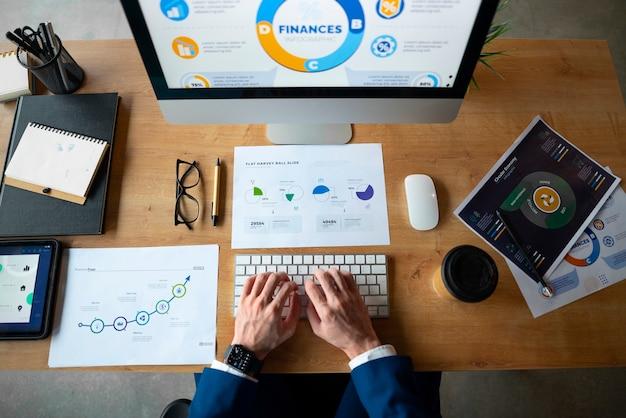
Many people want to achieve financial stability, and understanding personal budgeting is an important step toward that goal. Individuals who use an efficient budget planning app may achieve financial control, eliminate debt, and pave the road to long-term financial success.
Understanding Personal Budgeting
Personal budgeting devises a financial strategy that allocates future income to spending, savings, and debt payments. This approach assists individuals in monitoring their spending habits, setting realistic financial objectives, and making sound financial judgments.
Effective Budgeting Methods
Several budgeting approaches might help people achieve financial stability:
1. 50/30/20 Rule
The 50/30/20 Rule categorizes net income into three groups.
- 50% for Needs: Rent, utilities, food, and other fixed costs.
- 30% for Wants: Non-essential items such as dining out, entertainment, and hobbies account for 30%.
- 20% for Savings: Contributions to savings accounts, emergency money, and debt reduction.
This technique assures a fair distribution of finances and monthly income, promoting financial responsibility and adaptability.
2. Envelope System
In a cash-based approach, participants place particular amounts of money in monthly payments in envelopes designated for various spending categories. When an empty envelope is used, no more spending in that area is permitted for the month, fostering disciplined spending habits.
3. Zero-Based Budgeting
Each dollar of revenue is designated for a specific purpose, ensuring that income minus costs and fixed expenses equals zero. This strategy encourages conscious spending and assists in identifying places where costs may be decreased.
4. Kakeibo
A Japanese budgeting strategy that focuses on spending with awareness. Users keep track of their income and expenses in a ledger, classify their purchases, track expenses, and reflect on their financial habits to improve.
The Role of Budgeting Tools
Budgeting applications can make budgeting easier in today’s digital world. These programs provide automatic budgeting, expenditure tracking, bill monitoring, and subscription management. Users may have budgeting apps to keep informed about their financial situation and make required modifications by receiving real-time financial information.
Expense Tracking and Monitoring
Maintaining financial security requires regular spending tracking. Reviewing their bank accounts and records and categorizing spending can help individuals detect patterns and places where they may be overspending. This insight helps them make informed judgments about cutting needless costs and allocating more money to savings or debt reduction.
Creating Realistic Financial Goals
Setting specific and attainable financial objectives gives focus and inspiration. Whether saving for an emergency fund, a down payment on a house, or retirement planning, having defined savings goals helps people stay focused and dedicated to their financial plans.
Creating an Emergency Fund
An emergency fund is a financial safety net that pays for unforeseen needs like medical bills or automobile repairs. Financial experts recommend saving enough to cover three to six months of living costs. This fund offers peace of mind and eliminates the need for credit card debt or loans in an emergency.
Debt-Reduction Strategies
Debt management and reduction are critical for good financial health. In his book The Total Money Makeover, Dave Ramsey popularized the debt-snowball strategy, which entails paying off debts in order of interest rate. As people see their bills being paid off one by one, they gain momentum and drive.
Utilizing Budget Planning Apps
Integrating budgeting software into your daily routine might help streamline the budgeting process. These applications frequently include features such as automated cost categorization, bill reminders, and financial goal setting. They give you a complete picture of your financial status, helping you make educated decisions and maintain financial discipline.
Tracking Subscriptions and Recurring Expenses
Budgeting relies heavily on subscription management. Many people miss regular expenditures, which leads to wasteful spending. Regularly checking accounts and assessing and canceling unwanted subscriptions ensures that funds are directed toward more essential financial objectives.
Maximizing Savings and Investments
Aside from budgeting for everyday spending, focusing on long-term financial objectives such as investing is critical. Individuals can enhance their wealth over time by using investment accounts, opening investing accounts, and contributing to retirement programs. A diverse investing plan promotes long-term financial stability and development.
Avoiding Common Budgeting Mistakes
Many people struggle with budgeting because they make impulse purchases, set unrealistic objectives, or don’t check their spending. Avoiding these frequent blunders and spending patterns might help you retain financial stability. Regular budget reviews and modifications assure continuing success.
Financial Insights and Continuous Improvement
Regularly reviewing your bank statements and budgeting procedures helps you get financial insights and constantly improve. Analyzing spending trends, making budget adjustments, and defining new goals based on these findings promotes a proactive approach to personal finance.
Statistical Overview: Average Household Expenses
| Expense Category | Average Monthly Expense | Percentage of Income |
|---|---|---|
| Housing | $1,500 | 30% |
| Transportation | $600 | 12% |
| Food | $800 | 16% |
| Insurance | $400 | 8% |
| Savings | $500 | 10% |
| Entertainment | $300 | 6% |
| Miscellaneous | $400 | 8% |
| Debt Repayment | $500 | 10% |
Note: These figures are illustrative and can vary based on individual circumstances.

Conclusion
Personal budgeting is a continual process that demands attention and adaptation. By applying good budgeting practices, using current technologies, and remaining watchful about money habits, spending, and saving, individuals may attain financial stability and strive toward their long-term financial goals.










